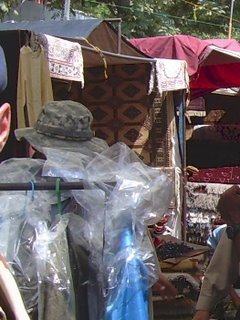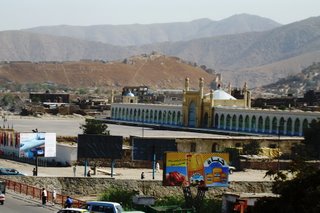Are Lessons Really Being Learned?: Rebuilding the Police Service in Iraq
Ambassador Paul Bremer's 2005 book My Year in Iraq and James Fallows’Atlantic Monthly Article "Why Iraq has No Army"(December 2005) raise serious questions about our ability to learn and apply "lessons" from previous post-conflict interventions. This applies to both mission planning and execution. One area where these questions are most apparent is the ongoing effort to rebuild the Iraqi police.
The US and the international community are no strangers to police rebuilding efforts, particularly since the end of the cold war era. Since 1989, the rebuilding of police services have been part of post-conflict interventions in Panama, El Salvador, Somalia, Haiti, Rwanda, Bosnia and elsewhere. Neither is there a shortage of documented "lessons learned" from these police rebuilding efforts. In the United States, dozens of government, non-government and academic institutions have been analyzing and documenting lessons learned from past interventions. The US Army War College, Naval Postgraduate School, National Defense University, International Peace Academy, US Institute for Peace are just a few. On the international level, several other nations have similar bodies that analyze and document post-conflict redevelopment lessons, including police rebuilding. The United Nations, Division of Peacekeeping Operations (DPKO), has established a Lessons Learned unit whose primary purpose is to collect mission reports, lessons learned documents, after-action reports and other source material to analyze and distribute lessons learned resources.
Despite this wealth of material, it is curious that in the detailed accounts Ambassador Bremer provides regarding conversations with senior police and military advisors on rebuilding the Iraqi police, discussions of experience from these previous efforts never appears. While these previous efforts cannot necessarily equate in scope and intensity of the police rebuilding effort in Iraq, especially the intensity of the on-going insurgency, many of the same issues facing Ambassador Bremer and his staff were faced in these previous rebuilding efforts.
Following the invasion of Panama, the failure to fill the so-called "security gap," when indigenous security forces collapse during or after the conflict, was identified as a critical issue. Planning for “Just Cause” did not include adequate plans for addressing the breakdown in security or for providing for “interim” policing. Based on the Panama experience, this successfully addressed in Haiti and in subsequent interventions. The need to train thousands or tens of thousands of new police was central to the efforts in Panama and El Salvador. In Haiti pressure to establish unrealistic training timelines, driven by the military "exit strategy," forced a planned 5-year effort to be completed in 15 months. Somalia typified conducting training police in an insecure environment. Each of these issues, and many more that Ambassador Bremer and his staff faced, have been encountered in the past and have been addressed with varying degrees of success or failure, all documented in some detail.
The Atlantic Monthly article provides one example of this failure to learn from past lessons. As reported, Lt. Gen. Mattis answers his own question “Should we have had training teams ready to go on the day we crossed the border?” with a resounding "Of course." This demonstrates one stark difference in police planning and execution between Iraq and previous interventions, such as Haiti. The Haiti police rebuilding mission was planned and executed based on the lessons learned from Panama. During the summer of 1994, months prior to troops entering Haiti, a police development plan was drafted which included: organizational structures, recruitment standards, deployment plans, complete training curricula for an "interim force" made up of former members of the security services to fill the "security gap," and a full four-month recruit course to create a totally new civilian police service. Both training programs included detailed lesson plans, drafted in advance by an international team of police training experts, supported by Haitian attorneys in exile in the US. These training programs, and a core staff of civilian police experts to begin implementation of both, flew into Port-au-Prince on US troop transports in the first days of operations. Training of the "interim" Haitian force began almost immediately and new recruits began the full police training curricula within three months military forces arriving. Over 5,000 new recruits put through the full basic training regime in 15 months. Despite these planning and operational lessons from previous interventions, Ambassador Bremer documents that, in Iraq, the most fundamental recruitment and training issues were being debated as late as August of 2003 - more than three months after major combat operations were completed.
These August conversations also raise disturbing questions related to mission planning, particularly with regard to lessons learned in interagency planning and civilian-military cooperation. The interagency approach to managing "complex contingency operations," developed in the 1990's based of lessons learned in Haiti, was originally laid out in detail in PPD 56 and elaborated in subsequent directives. This directive presented an NSC centered model for interagency planning and coordination, with a joint political military plan (Pol-Mil) as a core planning and execution guide. This concept relies heavily on tapping the broad experience of multiple specialized agencies. As designed, the joint civilian and military Pol-Mil plan would include: a situation assessment, statement of U.S. interests, desired end state, lead agency responsibilities, and transition or exit strategy. It would include details of the political, humanitarian and other programmatic efforts, to be executed by a mix of civilian agencies and military units, that would be necessary for a successful operation.
Ambassador Bremer’s recounting of conversations with civilian police advisors regarding their view of the military's approach to police training and decisions to put new Iraqi police recruits on the street with very limited training, are disturbing. These descriptions of the conflicting approaches in regard to the recruitment, training and deployment of Iraqi police presented by his civilian police and military advisors, well into the rebuilding phase of the mission, raises questions about the adequacy of pre-mission planning. One must wonder whether a more robust interagency process, where civilian agencies had an equal and early voice in planning the rebuilding efforts, could have ensured better coordination between civilians and military and resulted in a more effective police rebuilding program.
Despite the massive wealth of "lessons learned" and "best practices" material, Ambassador Bremer's disturbing accounts of discussions regarding the rebuilding of the Iraqi police service would indicate that we have neither developed the mechanisms to effectively incorporate the vast "lessons learned" resources into post-conflict efforts nor have we achieved the spirit of civilian-military cooperation and coordination envisioned in PDD-56.
Until we can make this connection, can we truly say that these lessons have been learned?
For Related Information go to:
http://www.trincellito.com/



